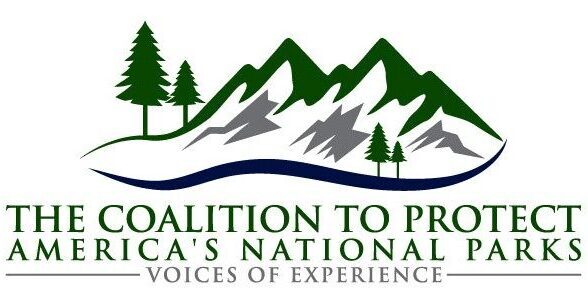Colorado Parks and Wildlife
6060 Broadway
Denver, CO 80216
Submitted via: online portal
August 8, 2025
RE: Inclusion of a Lead Ammunition and Tackle Phase-Out in CPW’s State Wildlife Action Plan
Dear Colorado Parks and Wildlife Planning Team,
Public Employees for Environmental Responsibility and Elaine F. Leslie, PhD, former National Park Service Agency Chief of Biological Resources and Wildlife Biologist and Executive Council member on the Coalition to Protect America’s National Parks, respectfully submit the following comments for the Colorado Parks and Wildlife’s (CPW) State Wildlife Plan. We strongly urge CPW to incorporate a clear, measurable commitment to phasing out the use of toxic lead-based ammunition and fishing tackle on lands and waters under the state’s jurisdiction. In doing so, the national parks and likely the national refuges must follow suit.
As organizations representing the public employees charged with protecting Colorado’s wildlife and ecosystems, we are compelled to speak out when best available science and field expertise point toward urgent action. Lead poisoning, stemming from spent ammunition and lost fishing tackle, remains one of the leading causes of preventable death among wildlife—particularly avian species such as bald eagles, golden eagles, hawks, and condors but also in scavenging carnivorous mammals such as brown and black bears, fox, wolverines and others.
Lead Poisoning is a well-documented threat, and the science is irrefutable and overwhelming. Peer-reviewed studies and agency data confirm that lead fragments from bullets and tackle remain in carcasses and waterways, where they are readily ingested by scavengers and fish. A 2022 Science study by the U.S. Geological Survey found that nearly half of all bald and golden eagles in North America suffer from chronic or acute lead poisoning.1Demographic implications of lead poisoning for eagles across North America, 2022 (science.org) Lead poisoning remains the leading cause of diagnosed death among California condors. About 90% of condors trapped and tested during this past year had blood lead levels indicating lead exposure.
As scavengers, condors ingest lead shot from carcasses of animals killed with lead-based ammunition. Recent tragedies like the death of the first California condor to fledge in Zion National Park—just shy of its fifth birthday—illustrate the life-threatening risks to threatened species. Shockingly, one of this condor’s siblings was earlier found to have the highest recorded lead value ever documented in a live bird over the entire 28-year history of the condor release program.2https://www.deseret.com/lifestyle/2024/08/05/california-condor-death-lead-poisoning-zion-national-park/
These effects are not limited to iconic raptors. More than 130 wildlife species in national parks have been found to suffer from lead exposure, and fishing tackle left behind in Colorado waters further compounds the problem, poisoning fish, amphibians, and birds. In addition, other wildlife species that feed upon animals that have ingested lead are targeted for poisoning as well.
This is a clearly preventable problem with existing solutions, many of which have been implemented elsewhere throughout the United States. These solutions are not speculative—they are available, cost-effective, and widely adopted elsewhere. Non-toxic alternatives to lead ammunition and tackle are already on the market and perform just as effectively. States such as California and numerous other states have some measure of lead restrictions. Colorado is one of the few states that has none.
The United States is quite far behind other countries that have successfully implemented full or partial bans with minimal disruption to hunting or angling communities. In Colorado, legislation like the Nontoxic Bullet Replacement Hunting Program (HB23-1036) takes a productive, incentive-based approach by proposing a bullet exchange program and public education campaign. These efforts represent critical first steps and ensure that the state of Colorado protects and preserves, hunts and fish wildlife species in a humane and moral manner. It should also be noted that this is also a human health issue. Hunters and their families, and underserved communities ingesting lead from spent ammunition in their moose, deer, elk, and fowl can also have detrimental health impacts.
Importantly, hunters and anglers—who care deeply about wildlife—can and should be part of the solution. Data show that with outreach and support, many are willing to voluntarily switch to non-toxic alternatives when made aware of the harm that lead causes.
Recommendation for CPW’s Wildlife Action Plan
To align with Colorado’s conservation mission and the best available science, CPW’s Wildlife Action Plan should seriously consider:
- Committing to phasing out lead-based ammunition and tackle on CPW-managed lands and waters, within a reasonable timeline and with implementation benchmarks.
- Supporting and coordinating with programs such as the Colorado nontoxic bullet exchange initiative to encourage voluntary adoption and outreach.
- Educating hunters and anglers through signage, permit materials, and staff engagement about the risks of lead to wildlife and humans and the benefits of switching to non-toxic options.
- Prioritizing monitoring and data collection on lead exposure in Colorado wildlife populations to inform ongoing management decisions by sampling carcasses and coordinating with rehab centers to better evaluate and understand the depth of the issue within the state.
Conclusion
Failure to address this issue undermines the core mission of CPW to protect Colorado’s rich biodiversity. The next decade should be one of leadership, not delay. Colorado has a chance to set a national example by committing to end a known and preventable source of wildlife mortality—without reducing access to hunting or fishing. We urge CPW to rise to this opportunity and enshrine a lead phase-out as a strategic goal in the final 10-Year Plan.
Thank you for considering these comments. We would welcome the opportunity to provide further scientific references or collaborate on implementation approaches.
Best,
Chandra Rosenthal, Public Lands and Rocky Mountain Advocate
Public Employees for Environmental Responsibility
Elaine Leslie, former Chief of Biological Resources for the National Park Service
Executive Council Member of the Coalition to Protect America’s National Parks
